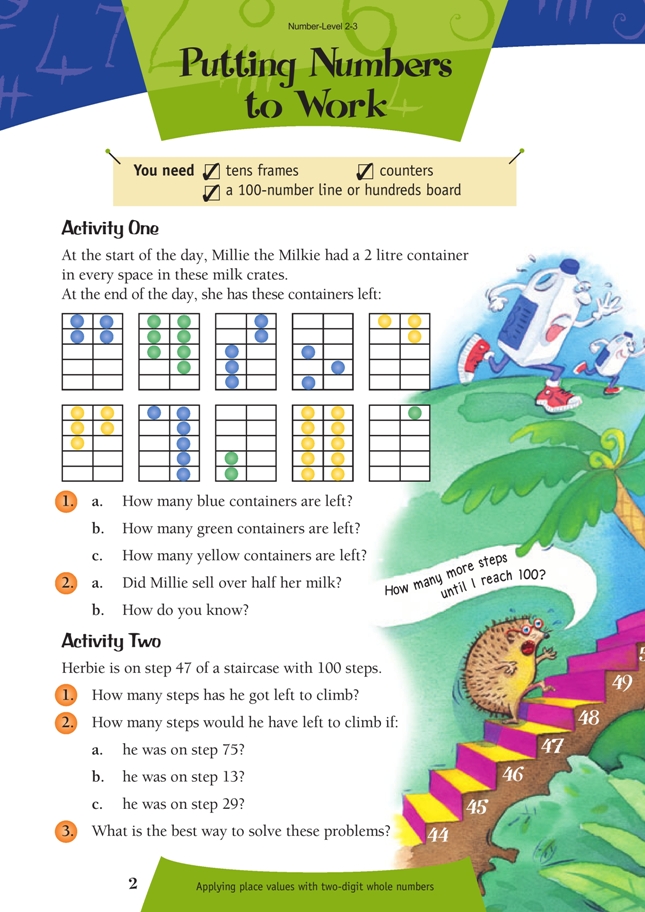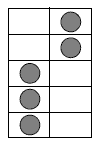This is a level 2 number activity from the Figure It Out series. It relates to Stage 5 of the Number Framework.
A PDF of the student activity is included.
Click on the image to enlarge it. Click again to close. Download PDF (316 KB)
recognise visual patterns in tens frames
use "up to ten" strategy to solve problems
- Tens Frames
- Counters
- FIO, Level 2-3, Number, Putting Numbers to Work, page 2
- A 100 number line or hundreds boards
Activity One
The aim of this activity is for students to recognise and use visual patterns in tens frames. For example, students may find many ways to work out how many green containers are left:
These strategies may be carried out in a tactile way with counters or more powerfully as mental images. Encourage students to communicate their strategies by drawing pictures in the air to show where counters are moved. Students at this level should have a good understanding of part-whole relationships, particularly with the number 10. This might be shown by them realising that there are 7, 2, and 1 green containers. Since 7 + 2 + 1 and 7 + 3 are names for ten, the total number of bottles is 10.
The arrangement of the blue containers may encourage students to use columns of five. For example, they may see the part-whole relationship of five in:
Students will demonstrate their understanding of place value by recognising that there are “10 10s” (a total of 100) places for containers and realising that less than 50 containers left will mean that over half the containers were sold.
Activity Two
Number lines or hundreds boards are useful aids for some students when solving this problem. The number of steps left for Herbie to climb might be found by subtraction, though “counting on” is likely to be the most natural method for students to use.
Encourage them to record their methods. Some may use the empty number line method.
This is a powerful method for solving some types of difference problems.
The activity also aims to reinforce students’ understanding of 100 as a unit, that is, its part-whole relationships.
Answers to Activities
Activity One
1. a. 18 b. 10 c. 18
2. a. Yes
b. Answers will vary, for example, out of 100, Millie sold 54, which is more than
one half.
Activity Two
1. 53
2. a. 25 b. 87 c. 71
3. Answers will vary, for example, subtract from 100.



